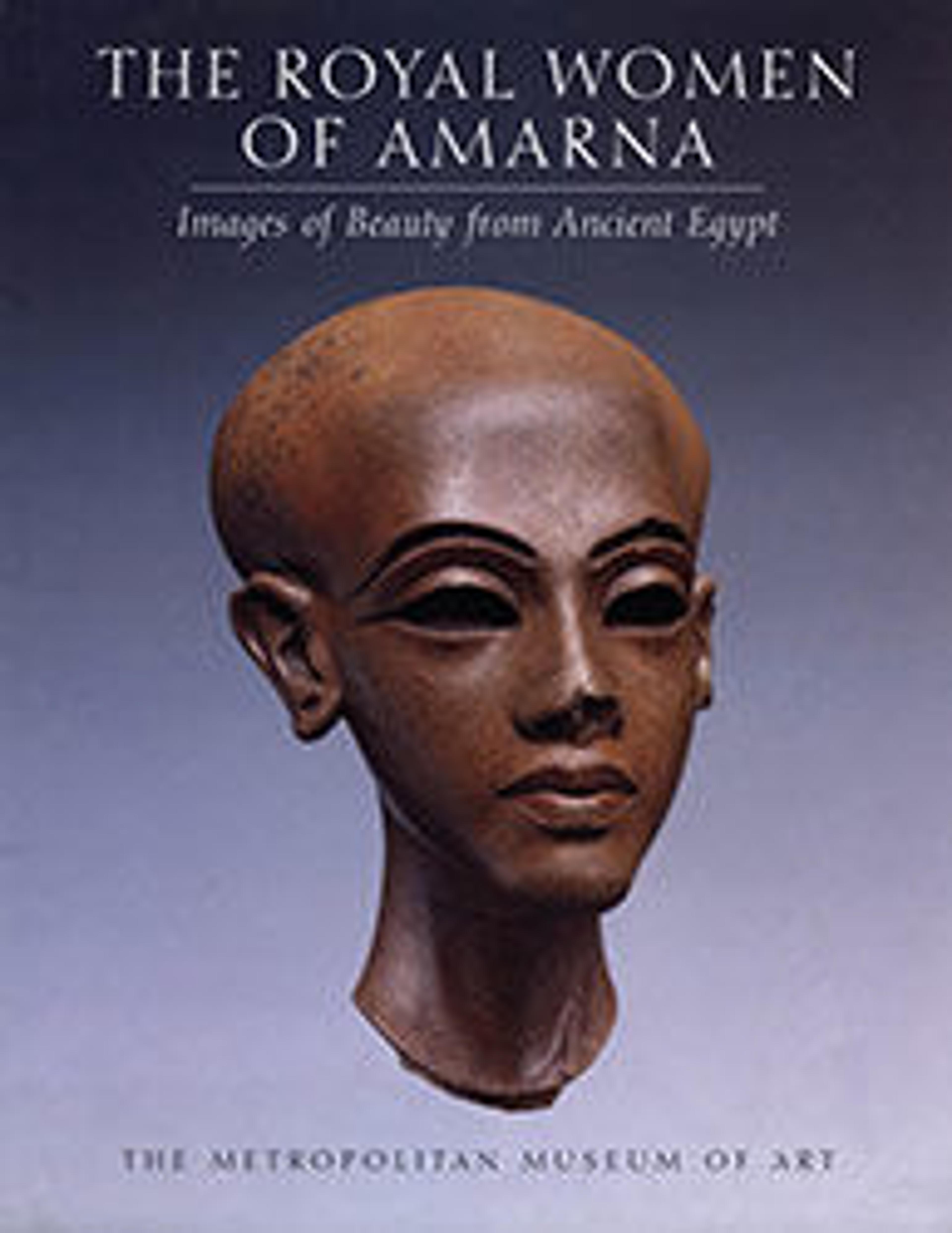Head of the god Amun
The braided beard and the flat cap with remnants of double plumes identify this god as Amun. His small eyes are separated by a curved depression from the rounded brow ridge; his broad face shows full lips with sharp contours, and, from the side, a slightly drooping chin. These features closely parallel those of King Tutankhamun and mark the piece as his commission. The statue was certainly created for Karnak, Amun's great temple at Thebes, as part of Tutankhamun's restoration of the god's monuments that had been defaced or destroyed during the reign of Akhenaten. A number of sculptures depict Amun touching the crown of Tutankhamun, who stands or kneels before him. This head seems very large for such a composition, however; thus it is likely that the head originally belonged to a large freestanding or seated figure of the god.
The similarities between this piece and late Amarna art suggest that sculptors from Amarna were active in Thebes during Tutankhamun's reign. The combination of the lush physicality of the mouth with the distant, veiled gaze of the small eyes beneath shadowing brows creates a tension. These features-as in late Amarna art, and like similar tensions in the faces of late Middle Kingdom sculptures,-were probably meant to convey a kind of interiority or reflectiveness.
The similarities between this piece and late Amarna art suggest that sculptors from Amarna were active in Thebes during Tutankhamun's reign. The combination of the lush physicality of the mouth with the distant, veiled gaze of the small eyes beneath shadowing brows creates a tension. These features-as in late Amarna art, and like similar tensions in the faces of late Middle Kingdom sculptures,-were probably meant to convey a kind of interiority or reflectiveness.
Artwork Details
- Title: Head of the god Amun
- Period: New Kingdom, post-Amarna Period
- Dynasty: Dynasty 18
- Reign: reign of Tutankhamun
- Date: ca. 1336–1327 B.C.
- Geography: Probably from Upper Egypt, Thebes; From Egypt
- Medium: Granodiorite
- Dimensions: H. 44 cm (17 5/16 in.), W. 38.2 (15 1/16 in.); D. 41.5 (16 5/16 in.)
- Credit Line: Rogers Fund, 1907
- Object Number: 07.228.34
- Curatorial Department: Egyptian Art
More Artwork
Research Resources
The Met provides unparalleled resources for research and welcomes an international community of students and scholars. The Met's Open Access API is where creators and researchers can connect to the The Met collection. Open Access data and public domain images are available for unrestricted commercial and noncommercial use without permission or fee.
To request images under copyright and other restrictions, please use this Image Request form.
Feedback
We continue to research and examine historical and cultural context for objects in The Met collection. If you have comments or questions about this object record, please contact us using the form below. The Museum looks forward to receiving your comments.
